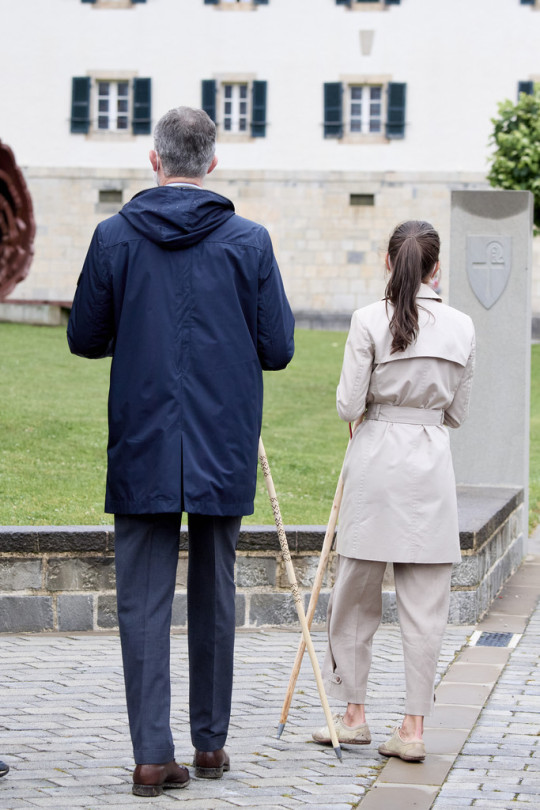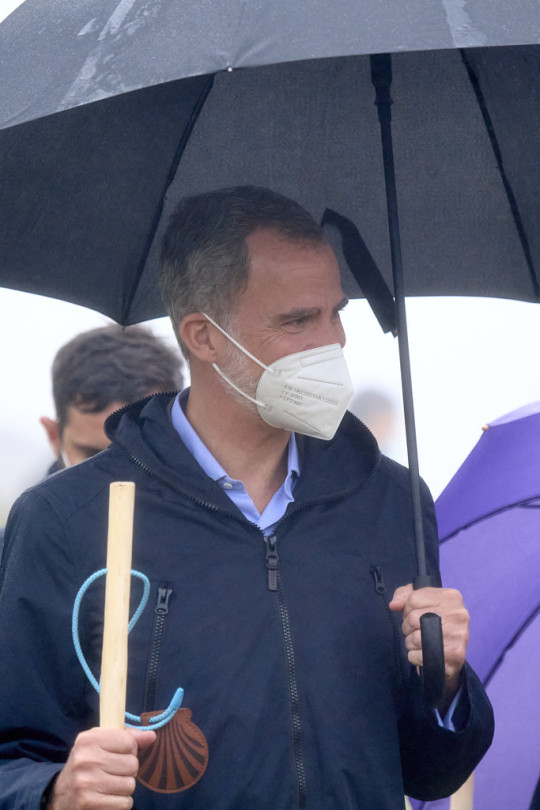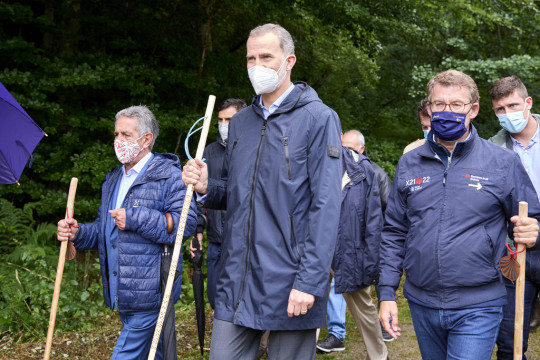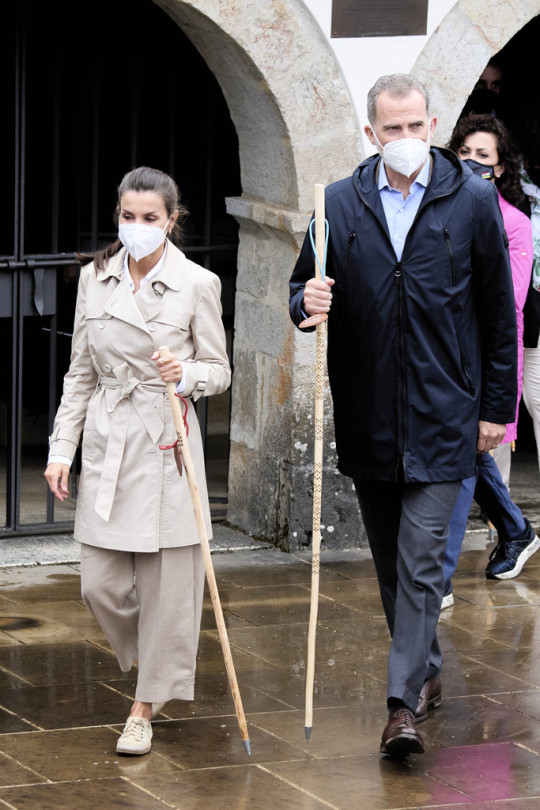#orreaga
Explore tagged Tumblr posts
Text
Brief mythological (and historical) dictionary of 'Irati'
@asongofstarkandtargaryen @queenmiriamele @luceirosdegolados @isadomna
Irati is a compendium of Basque mythology, it involves a review of many of its main figures, focusing on the "regent" of all creatures, the goddess Mari, embodied in the film by the actress Itziar Ituño. The filmmaker confesses that "many more" creatures appear in feature films than one is capable of perceiving, not in vain has he "played" to blur the lines between some mythological beings and others and to "mix". In an exercise of synthesis of the oral tradition, to which scholars such as the priest and anthropologist Joxe Miel Barandiaran dedicated a large part of their work, and with the desire to contextualize the spirit of Irati and the myths that through her gain new life, we offer you a small glossary of creatures, men and facts.
Aker: The goat is one of the beings that is not exclusive to Basque mythology, but also belongs to other traditions and religions. It is associated with the goddess Mari due to its healing abilities, but it is also associated with witchcraft. Not surprisingly, the term akelarre refers to the cult in which akerbeltz was venerated, an animal that, according to Barandiaran, was raised in homes to prevent cattle from getting sick. In fact, Barandiaran refers to him as a protective divinity. In different oral traditions of the Basque Country, he lives in a cave with a snake and is the custodian of a treasure. However, the witch hunt, which in the case of the Basque Country was promoted by Pierre de Lancre in the 17th century, caused the cult of the goat to be associated with the devil.
Basajaun: Being a giant humanoid in shape and covered in hair that lives in the depths of the forest or caves. This numen is related to traditional trades, with livestock, agriculture and blacksmithing. Thus, Basajaun is in charge of scaring the wolves to prevent them from attacking the sheep, which announce its presence with the unison ringing of their cowbells. The fact that it is considered the origin of various trades refers to the myth of Prometheus, the titan who stole fire from the gods to give it to humans, an act for which he was severely punished. According to Barandiaran, Basajaun was the first farmer from whom men, through deceit, obtained the first seed. The Gipuzkoan priest and anthropologist also highlighted that he is considered the first blacksmith and the first miller and, just like what happened with the first seed, the human being also stole the secrets for the manufacture of the saw, the axis of the mill and metal welding. Due to its characteristics it is also considered a jentil.
Eneko Aritza: Eneko Enekoitz, nicknamed Aritza (the oak or the strong), was the first king of Pamplona. The Latin sources name him as Enneco Ennecones, while the Muslims call him Wannaqo ibn Wannaqo. In this second feature film by Urkijo, he is played by Eneko Sagardoy and, along with the character played by Edurne Azkarate (Irati), he is one of the film's protagonists. The Álava filmmaker presents an Eneko before being crowned –he reigned between the year 824 and 852–. His father, also called Eneko (in the film he is played by Iñigo Aranbarri), was one of the leaders of the peninsular Vasconia who ambushed Charlemagne in Errozabal, in a contest that Otsoa Lupus II led from continental Vasconia.
Gentil or jentil: Wild giants of immense strength that lived in mountains or caves and were capable of lifting and throwing large stones. The jentil name is found in a multitude of Basque place names throughout the country's orography. The cromlechs and dolmens are, according to oral tradition, vestiges of these pagan builders who came to live in harmony after the spread of Christianity.
Lamia: Beautiful woman who combs her hair with a golden comb. Although it is anthropomorphic in shape, its feet can be those of a duck, chicken, or goat. It can be found on the banks of rivers and usually requires offerings, generally food (wheat, cornbread, cider, curd or milk). He usually rewards those who give him offerings in various ways. The philosopher Andrés Ortiz-Osés, in his work The Mother Goddess, in which he reflects on the figure of the goddess Mari and her cohort, speaks of the lamias as half nymphs and half mermaids, alluding to Greek and Latin myths. In this sense, Barandiaran neatly collected the different perspectives from which these beings have been described, either as numenas that help in farming or as beings that kidnap men on a whim. The advent of oxen-drawn plows (that is, technology) and the proliferation of Christian hermitages brought about the disappearance of lamias.
Mari: Main goddess of the Basque pantheon and one of the central figures in the film Irati. Urkijo highlights the telluric character of the deity and represents her as Mother Earth herself. As in Paleolithic religions, cavities represent the womb of life and she lives there, in the depths of a cavern, although paying attention to Barandiaran, she tends to periodically change homes by jumping from one mountain to another. She is the mother of the rest of the creatures that make up our mythology and, as Ortíz Osés explains, the goddess Mari is "omniparent", that is, she is the origin of everything and, at the same time, everything is linked. It usually appears combing her hair, cooking or spinning. The four elements converge in it and can be the source of storms and droughts. She is often consulted as an oracle and also rewards those who believe in her. It can be conjured by throwing or stacking pebbles.
Orreaga or Errozabal: In recent years, especially as a result of the investigations carried out by Xabier Irujo, the battle of Orreaga (the researcher claims the place name Errozabal) which took place in the year 778 has acquired new interest. The director of the Center for Basque Studies at the University of Nevada, Reno (USA), after almost a decade of studies using the original sources in Latin, denied many of the legends that have come down to our days, the majority of Frankish origin and that they were written 50 years after the death of Charlemagne (in the year 814) and also the events of the Chanson de Roland.
Before becoming emperor, Charlemagne, king of the Franks, undertook a campaign to develop the Hispanic March, a crusade whose objective was to consolidate a kingdom in the Pyrenees that would act as a barrier to prevent the advance of the Muslim kingdoms, after the start of their invasion in 711. With this objective he conquered the peninsular Pyrenees, that is, Navarra, including Pamplona. After failing in the attempt to conquer Zaragoza, Charlemagne, accompanied by 20,000 men, withdrew to Iruñea and, after destroying it, began the return trip through Errozabal, following a wooded path that connected Auritz with Luzaide.
Due to the narrowness of the track, the men had to march in a line, forming a line of between eleven and fourteen kilometers. It was then when the union between continental and peninsular Basques attacked the neck of the army, behind where the treasure was marching, producing what is known as the battle of Orreaga or Errozabal and which brought the defeat of Charlemagne's army, who fled from the fight and took refuge in Herstal, Belgium.
Irati seeks to be faithful to the latest research but, by ascribing to the sword and sorcery genre in the style of Legend or Willow, Urkijo did not want to miss out on the fantastic options that the Chanson de Roland allows.
Sugaar: A male snake. In some areas of the country, such as Ataun, Sugaar is a being that crosses the sky forming a fiery sickle figure. His presence announces the approach of a great storm. In other places, such as Azkoitia or Zarautz, on the other hand, the snake is the son and lover of the goddess Mari, as well as being the one who combs her hair. When both come together the heavens roar.
Tartalo: One-eyed man-eating creature. He is related to his Greek counterpart, Polyphemus, the son of Poseidon who was blinded by Odysseus in the Odyssey. Tartalo, according to Barandiaran, may be a corrupted version of Basajaun. Very present in the oral tradition of the municipalities of Goierri, Tartalo kidnaps human beings to devour them in the cave that he uses as his home and in which he lives with his sheep.
Zezengorri: In Basque mythology there are several animal-shaped numenas that share characteristic red skin. In addition to Zezengorri (red bull), we can find others such as Beigorri (red cow) or Zaldigorri (red horse). In any case, they are spirits from the subsoil whose objective is the defense of said cavities.
#irati#basque mythology#aker#basajaun#eneko aritza#gentiles#lamias#mari#orreaga#errozabal#sugaar#tartalo#zezengorri
28 notes
·
View notes
Photo

Jour 1 (2nd chapt). Sant Jean pied de port-Orreaga. #santjeanpiedeport #muga #border #france #spain #chamindesaintjacques #piris #orreaga #roncesvalles #navarre #nafarroa https://www.instagram.com/p/CQ-UpnEDCG3/?utm_medium=tumblr
#santjeanpiedeport#muga#border#france#spain#chamindesaintjacques#piris#orreaga#roncesvalles#navarre#nafarroa
0 notes
Text
I'm sorry, I had to do it


On a day like today (August 15th) in 798, the Vascon tribes defeated the biggest and most powerful professional army of Crhristianity, undefeated until that moment: Charlemagne's.
France is still processing the defeat and mantain the army fought against the Saracens 🤷♀️.
Art by Ru-Mor.
#euskal herria#basque country#battle of roncevaux pass#we did it twice too#the french are still not over it#orreaga 778#happy Carlomagno get fucked day
108 notes
·
View notes
Photo










July 12, 2021: King Felipe and Queen Letizia attended an event celebrating the Jacobean Year 2021-2022.
They walked the section of the Camino de Santiago to the urban complex of Orreaga - Roncesvalles and next to the Sancti Spiritus chapel, an old pilgrim cemetery. After a brief meeting with the members of the Government of Navarra and the authorities responsible for the Departments of Culture of the Autonomous Communities, the King and Queen went to the Priory House, where they were received by the Archbishop of Pamplona and Tudela, Monsignor Francisco Pérez González; the prior of that Royal Collegiate Church, Bibiano Esparza Tres, and by the members of the Cabildo of the Royal Collegiate Church of Santa María de Roncesvalles, and signed in the Gold Book of Navarra.
Felipe and Letizia also visited the Collegiate Church of Santa María de Roncesvalles where the event of commemoration of the Jacobean Year 2021-2022 was held with speeches and a musical performance with a selection of French and Spanish baroque music pieces, interpreted by the soprano Raquel Andueza and the La Galanía Group. After finishing the commemorative event, they went to the Chapel of San Agustín, where a floral offering was made in front of the tomb of the King of Navarre, Sancho VII el Fuerte.
The visit ended with a tour of the chapel and a meeting with the attendees.
#King Felipe#Queen Letizia#King Felipe of Spain#Queen Letizia of Spain#King Felipe VI#King Felipe VI of Spain#Official Event#20210712a#July 2021
20 notes
·
View notes
Photo

Simon Marmion - Eight stages of The Song of Roland in one picture - 15th century
Grandes Chroniques de France, St. Petersburg
The Song of Roland (French: La Chanson de Roland) is an 11th century epic poem (chanson de geste) based on the Battle of Roncevaux Pass in 778, during the reign of Charlemagne. It is the oldest surviving major work of French literature and exists in various manuscript versions, which testify to its enormous and enduring popularity in the 12th to 16th centuries.
The date of composition is put in the period between 1040 and 1115: an early version beginning around 1040 with additions and alterations made up until about 1115. The final text has about 4,000 lines of poetry. The epic poem is the first[1] and, along with The Poem of the Cid, one of the most outstanding examples of the chanson de geste, a literary form that flourished between the 11th and 16th centuries and celebrated legendary deeds.
The Battle of Roncevaux Pass (French and English spelling, Roncesvalles in Spanish, Orreaga in Basque) in 778 saw a large force of Basques ambush a part of Charlemagne's army in Roncevaux Pass, a high mountain pass in the Pyrenees on the present border between France and Spain, after his invasion of the Iberian Peninsula.
The Basque attack was a retaliation for Charlemagne's destruction of the city walls of their capital, Pamplona. As the Franks retreated across the Pyrenees back to Francia, the rearguard of Frankish lords was cut off, stood its ground, and was wiped out.
Among those killed in the battle was a relatively obscure Frankish commander, Roland, whose death elevated him and the paladins, the foremost warriors of Charlemagne's court, into legend, becoming the quintessential role model for knights and also greatly influencing the code of chivalry in the Middle Ages. There are numerous written works about the battle, some of which change and exaggerate events. The battle is recounted in the 11th century The Song of Roland, the oldest surviving major work of French literature, and in Orlando Furioso, one of the most celebrated works of Italian literature. Modern adaptations of the battle include books, plays, and works of fiction, and monuments in the Pyrenees.
Simon Marmion (c. 1425 – 24 or 25 December 1489) was a French and Burgundian Early Netherlandish painter of panels and illuminated manuscripts. Marmion lived and worked in what is now France but for most of his lifetime was part of the Duchy of Burgundy in the Southern Netherlands.
51 notes
·
View notes
Text
Camino de Santiago; Roncesvalles (Roncevaux) also called Orreaga, Navarra, Spain
Camino de Santiago; Roncesvalles (Roncevaux) also called Orreaga, Navarra, Spain


The village is perched next to the picturesque Pyrenees Mountains, in Navarra, northern Spain. Roncesvalles is known for the Battle of Roncevaux Pass in 778, during the reign of Charlemange. Rolandwas a commander Knight of the Frankish Army, who was the nephew of Charlemange. Charlemange suffered a great defeat from the Basque Army, and the bravest nephew killed. There was a beautiful poem…
View On WordPress
8 notes
·
View notes
Text

Another scenic stop just before we get into Orreaga/Roncesvalles which is also a prime stop for people on the Camino





So many shell signs in the last while on the drive. Some lovely spots around here, would be lovely to do the walk some time. Fair play to Aonghus for doing it last year, and my cousin Ciara has done it twice!
3 notes
·
View notes
Text
Dark Water, Chapter 4

Santa Teresa County
In Camarillo Han goes abruptly silent.
“Good to pick your own name,” he mutters, after a while. “Horses have both lines in their names. Sire and dam. Mexican names, too; they got the father and the mother’s names. Might make a whole different person of you. A whole different man. Benjamin Solo Orreaga. Maybe he’d have been better off than Ben Solo.”

2 notes
·
View notes
Text
Episode #209
Hello Hello Hello!
First block of 2017! I started with some brand new music and played new new songs by The Menzingers, Dave Hause (both from Philadelphia, PA, USA), AFI (Ukiah, CA, USA), The Bombpops (Oceanside, CA, USA) and The Fullblast (Oakville, ON, Canada).
Oh shit, second block is so exciting. I watched a documentary about Basque football and decided to played songs by bands from the Basque Country. It’s a very interesting region in Spain with it’s own history, language and great punk rock scene. I played superhits by great Basque bands such as Radiocrimen, B.C. Bombs (Bilbao), Kaotiko (Agurain), Orreaga 778 (Hernani) and Vendetta (Pamplona).
And the final block celebrates The Binz who decided for some weird reason to stop playing music and I’m not happy about that. I saw them for the first time on March 28th, 2013 when they played with Needles//Pins, B-Lines and Juvenile Hall at The Cobalt. So I played songs by all those great local bands. Dear Binz, thank you for great songs!

THE OFFSPIRNG - Smash [Smash] THE MENZINGERS - Lookers [After The Party] DAVE HAUSE - With You [Bury Me In Philly] AFI - Dumb Kids [AFI (The Blood Album)] THE BOMBPOPS - CA In July [Fear of Missing Out] THE FULLBLAST - Redemption [Attack.Sustain.Decay] RADIOCRIMEN - Mundo Basura [3er Grado] KAOTIKO - La Vista Atrás [Sindicato del Crimen] B.C. BOMBS - Puta Mentira [Let's go Bombs!!!] ORREAGA 778 - Aitari [Aske Izan Arte] VENDETTA - Pao Pao Pao [Bother] THE BINZ - Hale-Bopp [The Binz] NEEDLES//PINS - Hale Bop [12:34] B-LINES - Psychedelic High School [B-lines] JUVENILE HALL - No Cops [Magazine Collage] THE SMUGGLERS - Rosie [Rosie]
download / listen online
#Rocket From Russia#Vancouver#Canada#punk rock#pop punk#The Offspring#The Menzingers#Dave House#AFI#The Bombpops#The Fullblast#Radiocrimen#Kaotiko#B.C. Bombs#Orreaga 778#Vendetta#The Binz#Needles//Pins#B-Lines#Juvenile Hall#The Smugglers
1 note
·
View note
Text
Benito Lertxundi – Altabizkar e Itzaltzuko Bardoari
Benito Lertxundi – Altabizkar e Itzaltzuko Bardoari
Spain, 1981, Basque folk / euskal kantagintza berria This is simply a beautiful album, quite straightforward and satisfying in its neo-Medieval instrumentation, including the txapela, dulcimer, and cromorno. The first track is a 20-minute eight-stanza epic about the Battle of Orreaga in 778 AD, told from the perspective of the Basque people. For all the bloody imagery in the lyrics, this music…

View On WordPress
0 notes
Photo

Tumba de Sancho VII de Navarra
Tomb
Roncesvalles - Orreaga
0 notes
Text

@asongofstarkandtargaryen The soundtrack of Irati has been published. It seems there's a track/motif for some of the characters and several scenes. I have translated the title of the tracks to english (althoug maybe I got wrong in some part or not the exact term):
1. All that has a name exists
2. The Franks
3. Little Eneko
4. Orreaga
5. Eneko runs away
6. Lamia
7. Funeral
8. Fifteen winters later
9. The pain of the forest
10. You can hear the bottom of my heart, little girl
11. Me too, lamia
12. The Return of Eneko
13. The floor is wet with sweat
14. Grandfather Ximeno
15. Dana's punishment
16. The ground will be wet with sweat*
* in latin
17. Cross blow
18. Irati and Eneko towards the forest
19. I remember you
20. Basajaun
21. Mari's relatives
22. Conditions
23. Velascos
24. Irati
25. Not that awful
26. Ram
27. Eneko and Irati in the castle
28. The death of Luxa
29. Mari's hairdresser
30. A miracle*
*in latin
31. Around the Irati valley
32. Eneko's fate
33. Lord Eneko
34. Don't forget the rule of law
35. Credits
(The tracks are available in a playlist of Spotify)
2 notes
·
View notes
Photo

Dejando a esa cosa brillante del cielo 🌞, que por estas latitudes teníamos olvidada,que termine de preparar la cremita ❄️ mientras foqueamos por la línea fronteriza de Ortzantzurieta 🎿. 📍 Astobizkar. Orreaga-Roncesvalles #delrioalmonte #vive_montanas #beadventurer #campbaseoutdoor #esquidemontaña #rutas_lokas #pirineos #inpirineos @gw_pirineos #montanerodominguero #montañas #privatesportshop @pyreneespass #navarra #totaltrailspanish #total_mountains #poles🎿 @alpinloacker #epic_captures #fever_mountains @skirandomag #caminodesantiago @caminodesantiagofrances #gw_mountains #snow (en Orreaga/Roncesvalles) https://www.instagram.com/p/CXhAaTSszmX/?utm_medium=tumblr
#delrioalmonte#vive_montanas#beadventurer#campbaseoutdoor#esquidemontaña#rutas_lokas#pirineos#inpirineos#montanerodominguero#montañas#privatesportshop#navarra#totaltrailspanish#total_mountains#poles🎿#epic_captures#fever_mountains#caminodesantiago#gw_mountains#snow
0 notes
Photo

#HoyRecomendamos 📖📚♥️ WASCON @josetxoorueta @ereinargitalpenak @ereinargitaletxeaa • ¡UNA NOVELA HISTÓRICA ESPECTACULAR, UN NOVELÓN DESDE LA PRIMERA A LA ÚLTIMA PÁGINA! • #Wascon #JosetxaOrueta Año 781. El pueblo vascón, a pesar de la reciente victoria sobre las tropas de Carlomagno en la batalla de Orreaga o Roncesvalles, se encuentra debilitado por las luchas intestinas. Un periodo de penuria y el fallecimiento de los antiguos líderes han provocado el empeoramiento de las relaciones entre los clanes, sean estos cristianos, paganos o musulmanes. Mientras tanto, con la amenaza desde el norte por parte de los francos aún latente, el emir de Córdoba, Abd al-Rahman, se ha puesto en marcha desde el sur con un ejército espantoso, dispuesto a imponer su autoridad hasta los confines del Pirineo. Los vascones tendrán que luchar una vez más para garantizar su supervivencia como pueblo y, en esta ocasión, las mujeres asumirán responsabilidades que hasta ahora les estaban vedadas. WASCON es una aventura épica, de protagonismo coral, llena de emoción e intriga hasta el final, con el corazón unas veces en Pamplona, otras en Zaragoza y siempre, siempre, en los valles pirenaicos. • • • #Erein #ereinargitaletxea #RecomendacionesDeLectura #FLM2021 #EncuentrosZomClubDeLecturaLL #ClubDeLectura #ClubDeLecturaLL #EncuentrosConEscritoresLL #PromociónDeLibros #PromociónDeLibrosLL #PepaEntreLibros #LocuraDeLibros #instagram #instagramers #bookstagram #bookstagramespaña #books (en Navalmoral de la Mata, Spain) https://www.instagram.com/p/CUM0Rj-DhJm/?utm_medium=tumblr
#hoyrecomendamos#wascon#josetxaorueta#erein#ereinargitaletxea#recomendacionesdelectura#flm2021#encuentroszomclubdelecturall#clubdelectura#clubdelecturall#encuentrosconescritoresll#promocióndelibros#promocióndelibrosll#pepaentrelibros#locuradelibros#instagram#instagramers#bookstagram#bookstagramespaña#books
0 notes
Photo








July 12, 2021: King Felipe and Queen Letizia attended an event celebrating the Jacobean Year 2021-2022.
They walked the section of the Camino de Santiago to the urban complex of Orreaga - Roncesvalles and next to the Sancti Spiritus chapel, an old pilgrim cemetery. After a brief meeting with the members of the Government of Navarra and the authorities responsible for the Departments of Culture of the Autonomous Communities, the King and Queen went to the Priory House, where they were received by the Archbishop of Pamplona and Tudela, Monsignor Francisco Pérez González; the prior of that Royal Collegiate Church, Bibiano Esparza Tres, and by the members of the Cabildo of the Royal Collegiate Church of Santa María de Roncesvalles, and signed in the Gold Book of Navarra.
Felipe and Letizia also visited the Collegiate Church of Santa María de Roncesvalles where the event of commemoration of the Jacobean Year 2021-2022 was held with speeches and a musical performance with a selection of French and Spanish baroque music pieces, interpreted by the soprano Raquel Andueza and the La Galanía Group. After finishing the commemorative event, they went to the Chapel of San Agustín, where a floral offering was made in front of the tomb of the King of Navarre, Sancho VII el Fuerte.
The visit ended with a tour of the chapel and a meeting with the attendees.
#King Felipe#Queen Letizia#King Felipe of Spain#Queen Letizia of Spain#King Felipe VI#King Felipe VI of Spain#Official Event#20210712a#July 2021
10 notes
·
View notes
Photo

@NatxoBellido : A Roncesvalles/Orreaga, marcada la altura sobre el nivell de la mar de la nostra ciutat 😊😊😊 Hauríem de donar més importància a detalls com estos que ens situen en el "mapa". #AlacantCotaZero #AlicanteCotaCero https://t.co/Cf5HpRGxK5 (via Twitter http://twitter.com/NatxoBellido/status/1430622959010521094)
0 notes